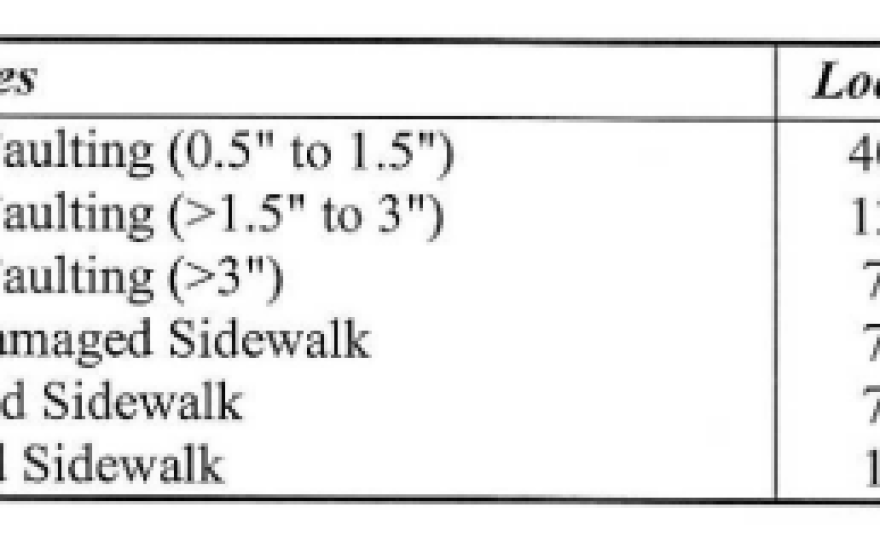It’s taken one and a half years, but a study of all of San Diego’s 5,000 miles of sidewalks is finally finished.
The assessment found more than 78,000 instances of sidewalk cracks, tree-damaged sidewalks and uplifted sidewalks, meaning places where one sidewalk panel is higher than another. It also found 620 miles of road where no sidewalks exist.

The report will go to the City Council’s infrastructure committee Thursday. Committee chair Mark Kersey said he didn’t know what the report would find because this is the first time the city has done a complete assessment of all its sidewalks.
“I knew in certain parts of town the sidewalks are very old, so we knew they’d be bad, but I didn’t have specific expectations,” he said. “We do have a lot of places where, due to tree roots or age, sidewalks need to be replaced, or at the very least need to have asphalt ramping so people aren’t tripping on them. There’s a lot of instances of that, and that’s good because now we’ve identified where the problems are, what the highest priority issues are in terms of public safety, and we can tackle those first.”
But the report found that with the money going toward sidewalks, in the next year the city will only be able to fix 7,000 of the 70,000 problems. Sidewalks will get $6.4 million from a combination of fiscal 2015 funding, lease revenue bond money and proposed fiscal 2016 funding, Kersey said.
About $2.7 million in combined fiscal 2015 and 2016 funding will go to build new sidewalks, but that money will only fund 3.5 miles of the 620 miles of nonexistent sidewalks.
Not all of those 620 miles of sidewalks need to be built, because in some cases residents don't want sidewalks, Kersey's spokeswoman Gina Jacobs said. She added that it costs between $500,000 and $1 million to build a new mile of sidewalk, because those projects also include new curbs and ramps.
Kersey said the city is spending more on sidewalks “than we have any time in recent memory.”
During the last 10 years, the city has spent about $400,000 a year on sidewalks, according to the report.
Doing the assessment and finding out specifically where the problems are helps the city to prioritize, he said.
“Getting that data in there is so critical because previously we were relying on constituents just calling in and complaining, and we’re certainly happy to take those calls but it’s not a very comprehensive way of doing it, it’s just based on what people see anecdotally,” he said. “We’re able to go out and examine every sidewalk in the city and get that level of granularity in the data, which is really important because we’re trying to tackle this in a comprehensive way.”
He said reports like these illustrate the ways past city leaders neglected infrastructure.
“We’ve been able to change that narrative a little bit and get people interested in infrastructure and hopefully put the city on the right path forward,” he said.
The study was done by 24 engineering students who walked the streets with handheld GPS devices. They marked every time they saw an issue, creating a wealth of data, Kersey said.
Kersey is also leading the city’s open data policy, but said he wasn’t sure if the sidewalk data could be made available to the public online.
“I’m not sure what format it’s in right now, but as part of our open data initiative it would be nice to have some of that accessible,” he said.
The study was projected to cost $1 million, but came in instead at $800,000. It was scheduled to be finished in February. Kersey said it took longer to finish because half of the students doing the assessment graduated in December 2014, and by the end the study only had nine students.






